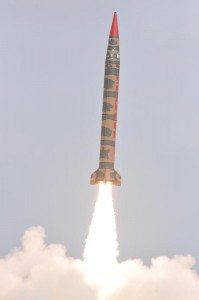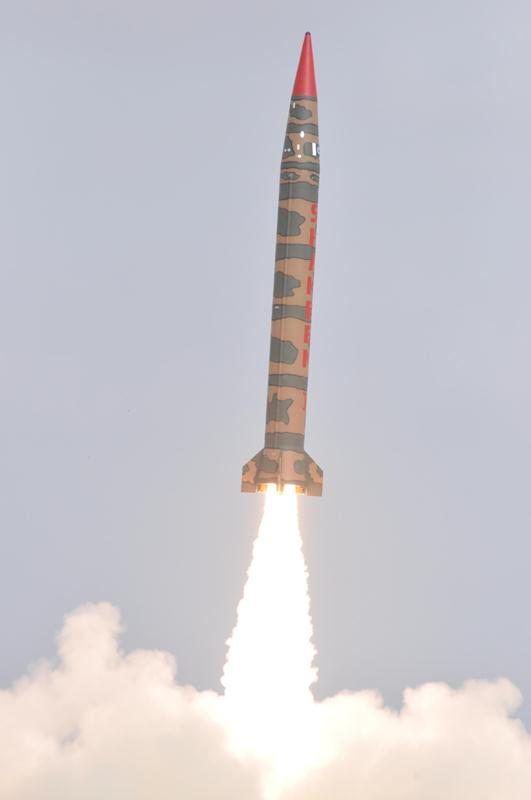Pakistan successfully test-fired a nuclear-capable intermediate-range ballistic missile on Wednesday, the military said, less than a week after India tried out a long-range missile.
The exact range of Pakistan’s missile was not revealed, but retired General Talat Masood, a defence analyst, told AFP intermediate-range ballistic missiles could reach targets up to 2,500-3,000 kilometres (1,550-1,850 miles) away — which would put almost all of arch-rival India within reach.
On Thursday last week India test-fired its long-range Agni V missile, which can deliver a one-tonne nuclear warhead, bringing anywhere in China into range.
“Pakistan today successfully conducted the launch of the intermediate-range ballistic missile Hatf IV Shaheen-1A weapon system,” Pakistan’s military said in a statement.
India and Pakistan — which have fought three wars since independence from Britain in 1947 — have routinely carried out missile tests since both demonstrated nuclear weapons capability in 1998.
Pakistan’s most recent missile test came last month with the launch of the short-range nuclear-capable Abdali, while in April 2008 it tested the Shaheen II, or Hatf VI, missile with a range of 2,000 kilometres.

Wednesday’s missile, which landed in the sea, was a version of the Shaheen-1 with improvements in range and technical parameters, the military said, and can carry nuclear and conventional warheads.
“This is part of Pakistan’s programme to develop nuclear and missile deterrence. It has a series of missiles in its inventory. This is perhaps the longest-range missile in its programme,” retired general Masood told AFP.
“The whole object is essentially India-centric while India’s own programme is directed towards China. Pakistan is engaged in improving its missile system as India continues to increase its capability.”
Director General Strategic Plans Division Lieutenant General Khalid Ahmed Kidwai congratulated scientists and engineers on the successful launch, and the accuracy of the missile in reaching the target.
He said it would further consolidate and strengthen Pakistan’s deterrence abilities.
Pakistan’s arsenal includes short-, medium- and long-range missiles named after Muslim conquerors.
India’s missile test last week brought a muted international response, with China downplaying its significance, insisting the countries were partners not rivals, and Washington calling for “restraint” among nuclear powers.
This was in sharp contrast to the widespread fury and condemnation that greeted North Korea’s unsuccessful test launch of a long-range rocket on April 13.
The United States, Pakistan’s uneasy ally, later Wednesday again called for restraint.
“What’s most important is that they do seem to have taken steps to inform the Indians, and we, as you know, are quite intent on those two countries continuing to work together and improve their dialogue,” said US State Department spokeswoman Victoria Nuland.
India and Pakistan were on the brink of war in 2002 over the disputed territory of Kashmir, but a slow-moving peace dialogue resumed last March after a three-year suspension following the November 2008 Mumbai attacks.
India and the United States blamed the attacks on Pakistani militant group Lashkar-e-Taiba and Islamabad later admitted that the assault was at least partly planned in Pakistan.
A study published on Tuesday claimed that more than a billion people worldwide could starve if India and Pakistan unleash nuclear weapons as even a limited nuclear war would cause major climate disruptions.










